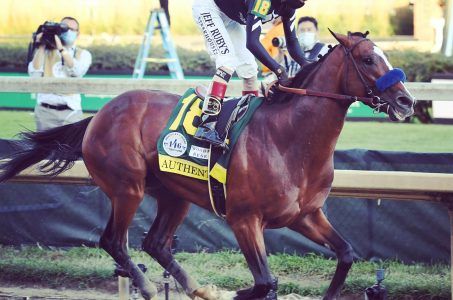Before Ushering In Fixed-Odds, US Horse Racing Must Fix Its Safety Issues – Opinion
Posted on: December 7, 2021, 09:04h.
Last updated on: December 8, 2021, 09:32h.
An article about the future of horse racing, and how fixed-odds betting will play a role in that, has been on my to-do list for a while, and especially since last week’s SBC Summit North America. But after Monday’s awful news about Medina Spirit’s tragic death on the track, now just doesn’t seem like the right time.

It’s still an important topic. And the insights from a panel at that conference as well as those from the 47th Annual Global Symposium on Racing that started Tuesday at the University of Arizona are well worth discussing at some point. But before horse racing looks to broaden its audience, there are other changes that need to be made.
The major change that needs to occur is improving the horses’ safety. Nothing else matters until that’s done.
I bring this up not to be against racing because I’m not. I grew up 10 minutes from Churchill Downs and have spent a lot of time and money there. I bring it up because I would like for the sport to have a future.
At its best, horse racing is a sport that seemingly endears itself to a 21st-century sports fan. Races take just a couple of minutes and can offer exciting, dramatic finishes. The downtime between races gives time for bettors to determine who they like in the next race, or they can watch simulcasts from other tracks for a chance to bet on another race that takes place just moments later. Offering a fixed-odds product would help draw new bettors.
But what good is it to spend the time, money, and energy on campaigns to attract new fans and bettors, when outside of the Triple Crown races, the sport seems to only garner media attention when a horse dies or when there’s a drug scandal?
‘Safer and Fairer’ Horse Racing is Attainable
Charles Scheeler agrees that horse racing can and must be safer.
He made that statement during his remarks Tuesday at the Symposium. Scheeler is the chairman of the Horseracing Integrity and Safety Act (HISA) Board of Directors. The board has been charged with developing the national racing rules called for from HISA, the federal legislation passed a year ago. Those rules officially take effect next July.
HISA has been met with criticism by some horsemen in the game, who fear it will increase their costs and not improve the safety of the sport. A major concern is the banning of Lasix, a drug used to control pulmonary bleeding. But most jurisdictions began banning the drug last year in a phased approach. Banning it for 2-year-olds beginning in 2020 and for all stakes runners beginning this year does not appear to have caused any issues in the sport.
And while several horsemen’s organizations have sought to block HISA in federal court, Scheeler called on them to join with other industry leaders to improve racing.
It doesn’t matter which side of that (debate) you’re on,” he said. “Whether you think the glass is three-quarters full or three-quarters empty, what matters is that we all recognize that a safer and a fairer sport will create a rising tide, which will raise all persons in the sport.”
Racing really doesn’t have a choice, added Scheeler. He’s a retired lawyer who once served as the lead counsel to George Mitchell when the former US senator led the independent investigation into the use of performance-enhancing drugs in Major League Baseball. Maintaining the status quo is not an option.
“If we stay where we are, we won’t stay where we are,” he said. “We will lose ground.”
Database Shows Improvements
Statistics show that racing in the country has improved in recent years. The Equine Injury Database, maintained by The Jockey Club, has kept records of fatalities from races since 2009. In 2020, participating tracks reported an incidence rate of 1.41 fatalities per 1,000 starts. It’s the eighth straight year the rate has declined.
Another way to look at it, as The Jockey Club explained, is that 99.86 percent of all starters on those tracks completed their races without suffering a fatal injury.
That may seem like a very low incidence rate, but the database doesn’t cover all fatalities. Medina Spirit, for example, died after a workout.
In addition, as racing publication BloodHorse noted in its study two years ago, fatalities in US racing tend to run higher than in Great Britain, Japan, and Hong Kong.
More, indeed, can and must be done.
The use and abuse of drugs in the racing industry have put the sport at a crossroads. Racing stakeholders must agree on which direction the sport needs to go before other measures to improve the sport can be implemented.
Related News Articles
Most Popular
LOST VEGAS: The Foster Brooks Robot at MGM Grand
Bally’s Sets Date for Tropicana Las Vegas Implosion & Party
Most Commented
-
VEGAS MYTHS RE-BUSTED: You Don’t Have to Pay Resort Fees
— August 2, 2024 — 16 Comments -
VEGAS MYTHS RE-BUSTED: Elvis Was a Straight-Up Racist
— August 9, 2024 — 11 Comments -
ANTI-SOCIAL BEHAVIOR: Vegas Casino Buffet Stunt in Poor Taste Goes Viral
— August 16, 2024 — 7 Comments -
VEGAS MYTHS RE-BUSTED: The Strip Tried Appealing to Families and Failed
— August 23, 2024 — 7 Comments
















No comments yet